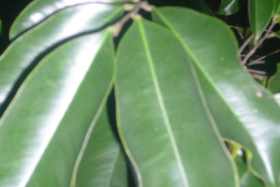 Agarwood Green Tea
Agarwood Green Tea Agarwood Green Tea Agarwood Green Tea |
| Worm Farming Worm farming is a growth (no pun intended) industry. You can buy compost worms at the garden centre, complete with an expensive home for the worms. This is not neccessary if you are able to get your hands on a couple of kilos of fresh compost worm castings, so, you don't need to get involved in a worm farm at all. The following is our story and guide on how best to utilise worm shit in your garden or on your farm. Agarwood Trees are known to be sensitive to chemical fertilisers, particularly Urea. As part of our cultivation program we installed a worm farm. Worm farming is very easy and rewarding, though on a large scale, there is some planning required. I don't really want to get into too much detail as there are plenty of publications available to help you get a worm farm started. I want to talk about how to boost the population of naturally occurring earthworms in the soil, as these guys do so much to enhance the the productivity of any garden. Again, the activity of earthworms and how they are beneficial to a healthy living soil is the subject of many publications, suffice to say, they aerate the soil with their tunnelling, thus provide good drainage and moisture retention. Earthworms excrete a nitrogen rich mucus to lubricate their tunneling and the worm castings are prized source of benficial nutrients. Earthworm cysts/eggs can lie dormant in the soil for many years waiting for the appropriate conditions to hatch, so even without the physical evidence of worms they are more than likely there, it is simply a matter of how to create the right conditions. For a large scale application as ours we had to consider the number of compost worms required, availability of food source and castings they would produce. From the very beginning we knew we were not going to achieve the quantities of castings we required to 'straight' fertilize with castings. We discounted the use of leacheate/worm tea as this is known to contain plant pathogens. Our plan was to build a reactor and breed the bacteria present in the worm castings. To recipe is simple: Worm shit, water, mollasses, oxygen and nitrogen. The equipment needed is readily available: A 60 liter bin with lid and an aquarium air pump. A kilo or two of worm shit in an old pillowcase placed in the bin full of water, add a kilo of mollasses and about 50 grams of urea, turn on the air pump, cover and leave for a couple of days. You will know it's ready by the stench. That's it. As the bacteria breeds it eats all the nasty pathogens we don't want, becomes the soil conditioner we are looking for and an effective foliar fertiliser. To be an effective soil conditioner, the bacteria needs to be alive, the longer it remains living and breeding in the soil the better. To achieve a continuing cycle you need plenty of organic matter for a food source and nice moist conditions. In our case we mixed the magic brew with 50% water and applied with a watering can. You must do this in the evening or at night as ultra violet rays from the sun will kill the bacteria. It is possible to spray, though too high a pressure will also kill the bacteria. Under good conditions the bacteria will continue to breed and die, providing a good nutrient source for your plants, but more importantly, provide the conditions that will awaken the dormant earthworm population that will continue this cycle without your intervention. Do not use the whole bin of your brew. Keep about ten litres as a starter for the next batch. The next time you will only need the water, mollasses and urea. We have managed to reactivate the bacteria after a few months with the pump off, I don't know if this was just good luck, perhaps a micro biologist would be able to explain how these things work. As a foiliar spray, we add about 50% water to the mix and spray on a cool day as you can burn the leaves if spraying in direct sun light on a hot day, and, the leaf stomata are closed over certain temperatures. The bacteria will die though, yet remaining nutrients will feed the plant. Two seasons later, a visiting pal was amazed at the incredible amount of earthworms and castings in evidence on our property and also the health and growth of our trees. |